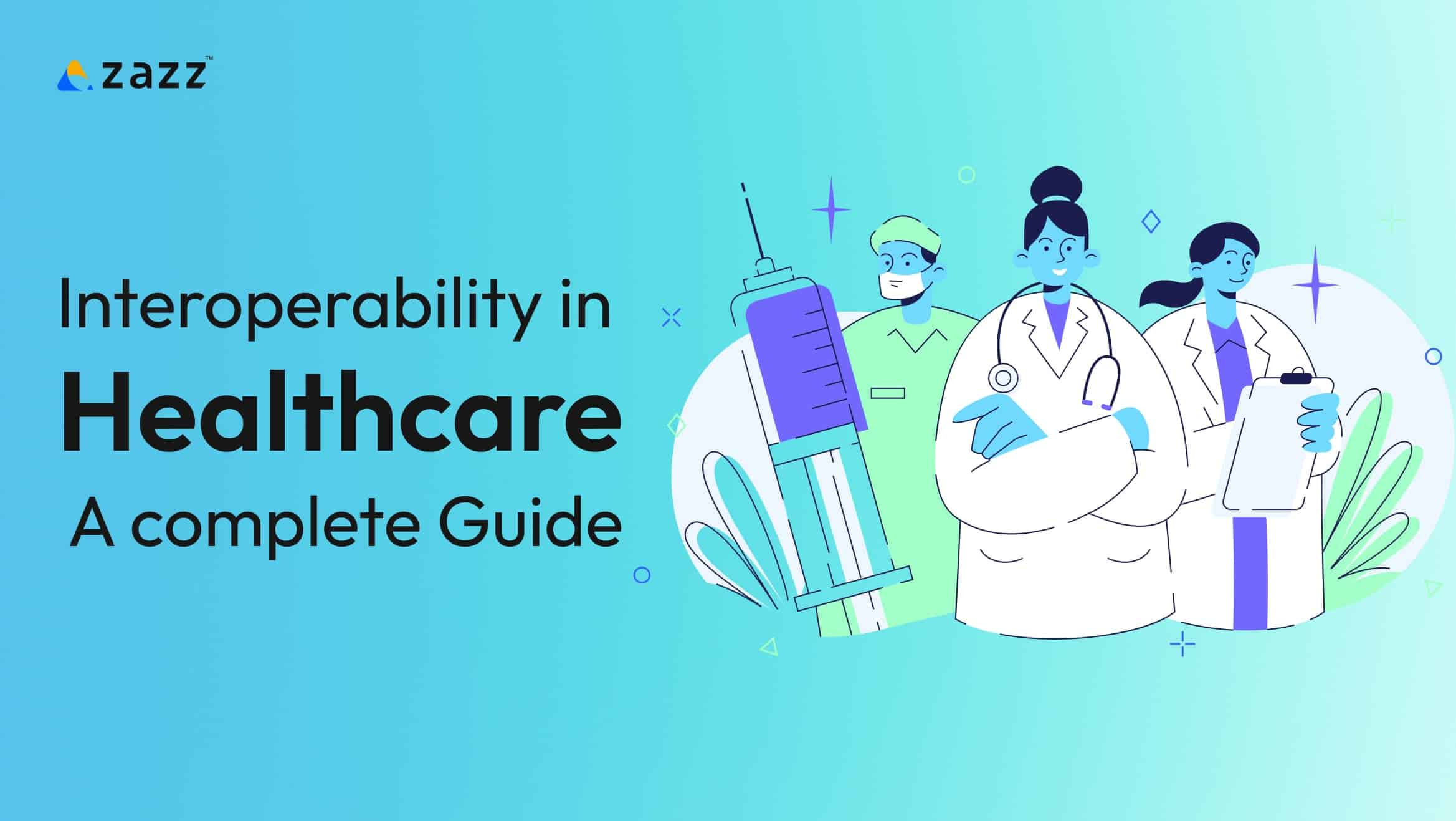
Table of Content 1. What’s interoperability?
2. Levels of interoperability in Healthcare
3. Benefits of Interoperability in Healthcare
4. What are the challenges to look out for?
5. The takeaway
Introduction:
The advent of new technology enables every industry to push their boundaries and achieve major breakthroughs. Interoperability is one such technological aspect that opens new avenues for industries to dive into the depths of data and discover new possibilities. This blog will help you understand the basics of interoperability and how it is leveraged in healthcare industry to achieve better results.
What is interoperability ?

Interoperability refers to the capacity of a device, software development or an application to communicate & share information with other devices, software or applications.
Based on the degree to which a device or an app can communicate or share information, interoperability is categorised into 4 levels.
(In healthcare, the healthcare information management system society (HIMSS), an organisation that helps in technology transformation of healthcare industry, defines the levels of interoperability)
- Foundational interoperability – It is the basic level referring to data transfer from one system to another. But sent data will not be received in the same format or structure.
- Structural interoperability – this is a next level interoperability. At this level, the exchanged data will carry the same structure – that is, the sent data will be received in the same format.
- Semantic interoperability – at this level the shared data can be interpreted by both parties irrespective of the terminologies involved, irrespective of the device compatibility.
- Organisational interoperability – it is the level where all the devices and software involved in the organisation are in sync that helps in streamline workflows.
Benefits of interoperability in Healthcare:

1.Improved patient care & patient safety: Interoperability helps maintain accurate patient records which will be distributed across the patient care team, leaving zero or less chances for any mistakes to happen, thus improving patient care while enhancing their safety.
2.Data accuracy : Interoperability can help achieve data accuracy in healthcare which is likely to be compromised in manual entry
3.Streamlined workflows: It helps in streamlining of data collection & monitoring ensuring a smooth workflow
4.Reduced costs: By improving efficiency and reducing errors, interoperability can lead to significant cost savings for healthcare systems
5.Evidence based research & practices: It promotes evidence based practice or research in medicine that will pave way for ground breaking discoveries in the future.
6.Improved communication: Data transparency among the internal teams leads to clear communication which in turn promotes better collaboration
What are the challenges to lookout for?

Standardization Issues: Lack of universally accepted standards can hinder effective communication between systems.
Data Silos: Organizations often operate in isolation, creating fragmented data that is difficult to integrate.
Technical Compatibility: Diverse technologies and platforms may not be designed to work together, complicating integration efforts.
Security Concerns: Ensuring secure data exchange while maintaining interoperability can be complex, especially with sensitive information.
Regulatory Compliance: Adhering to varying regulations across regions can complicate interoperability efforts.
Resource Constraints: Limited technical expertise and funding can restrict organizations from implementing interoperability solutions.
User Resistance: Change management and user adoption can be challenging, as stakeholders may be reluctant to modify existing systems.
Addressing these challenges requires collaboration, investment in technology, and a commitment to developing open standards.
The takeaway:
Interoperability is essential for enhancing efficiency and collaboration across diverse systems and platforms. By enabling seamless communication and data exchange, it fosters innovation, reduces costs, and improves user experience. As industries increasingly rely on interconnected technologies, prioritising interoperability will be crucial for ensuring sustainable growth and adaptability in an ever-evolving digital landscape. Embracing standardization and open protocols can further facilitate this integration, ultimately leading to a more cohesive and responsive ecosystem.











